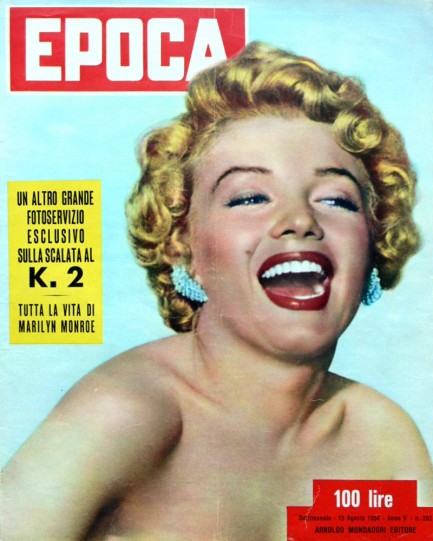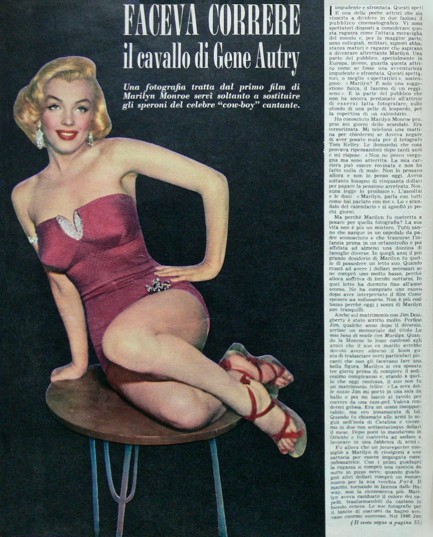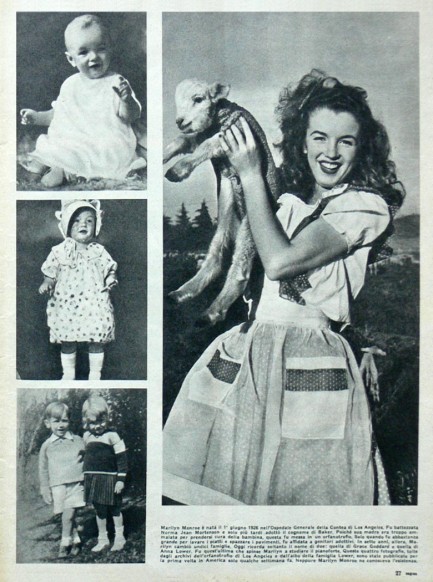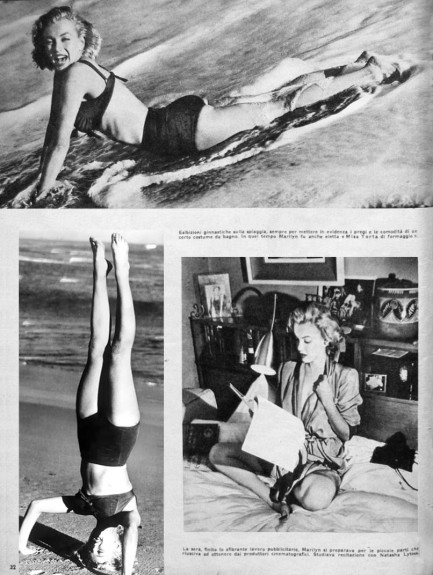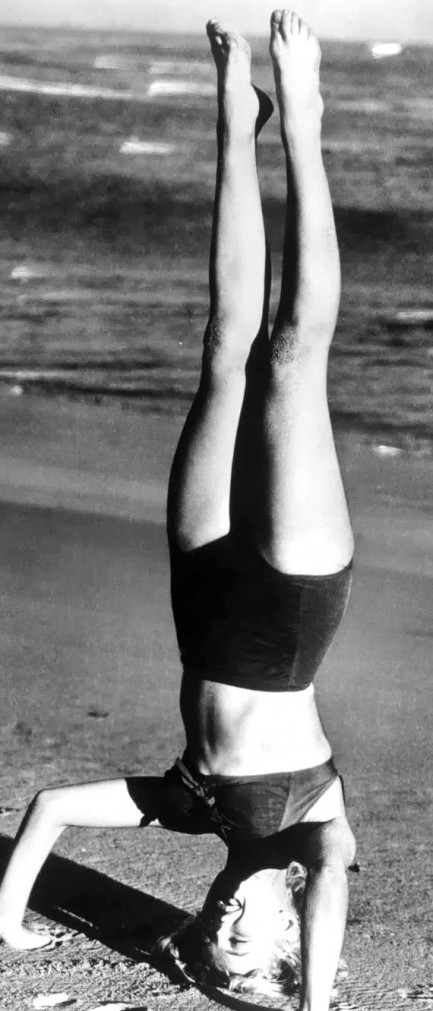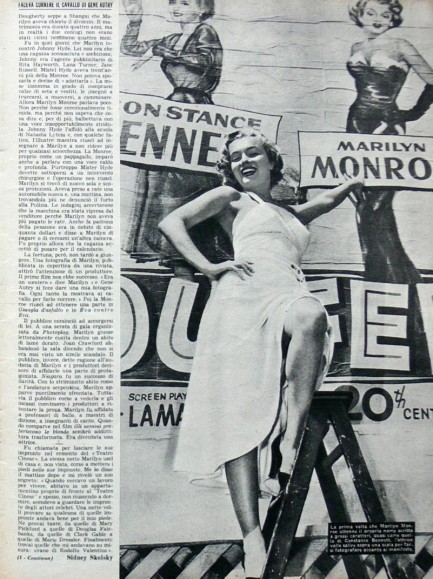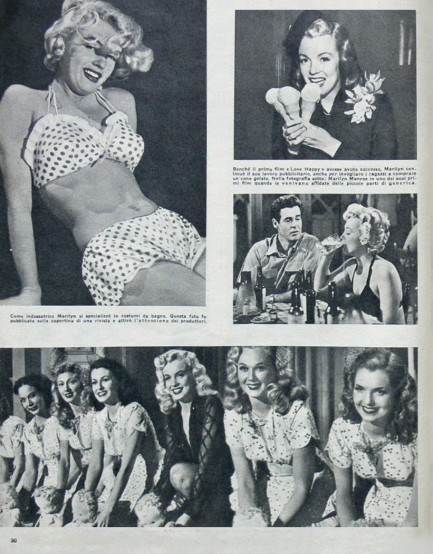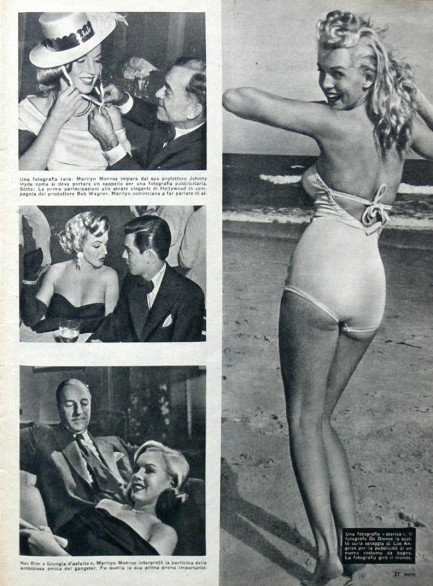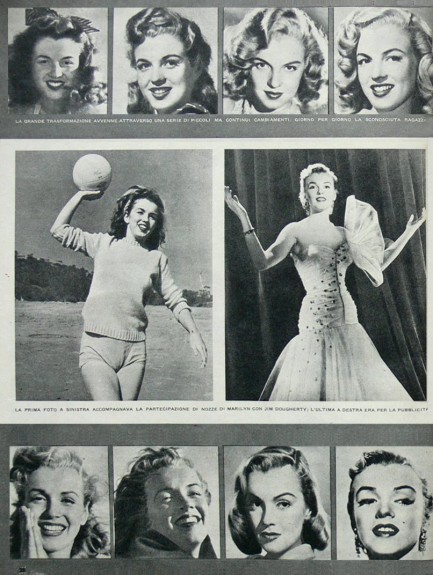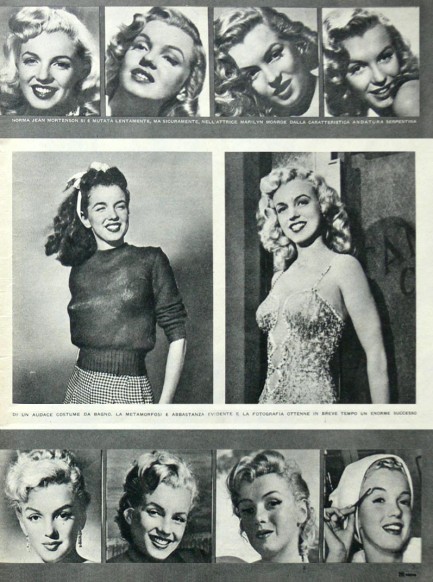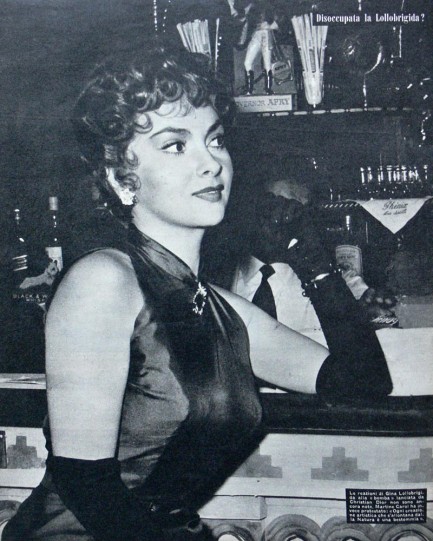| Femmes Fatales | Jul 7 2023 |

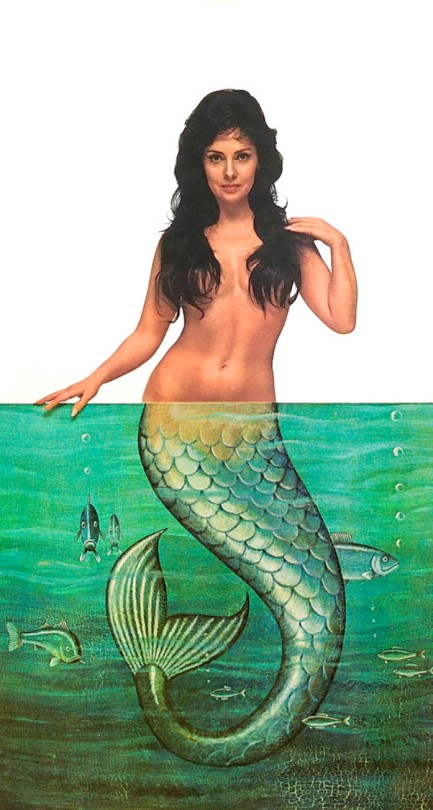
This unusual photo shows Italian star Gina Lollobrigida paired with an aquatic foreground painting, and was made for a 1963 cover of the New York City based arts magazine Show. We took the liberty of removing the magazine's logo so you could enjoy 100% pure Lollo, and we think you'll agree it was worth the effort. This is a very cool idea for a promo image. We especially like the baffled expressions on all the fish. We're baffled too when it comes to mermaids. How in hell do they..? Well, never mind.
| Intl. Notebook | Sep 14 2022 |

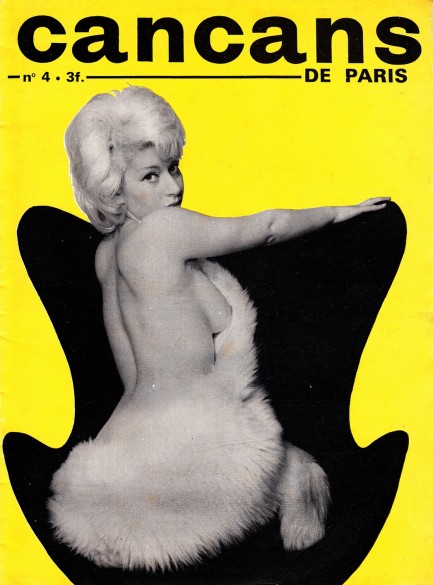
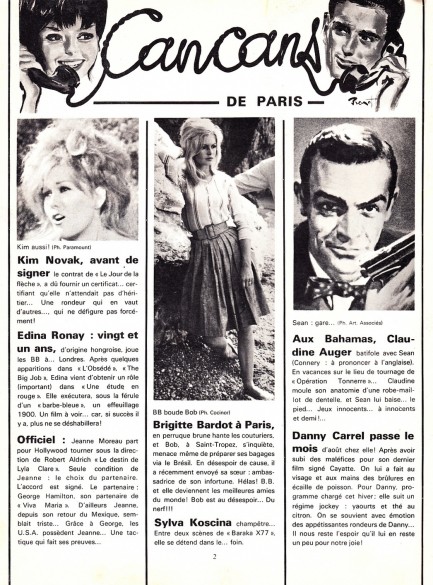
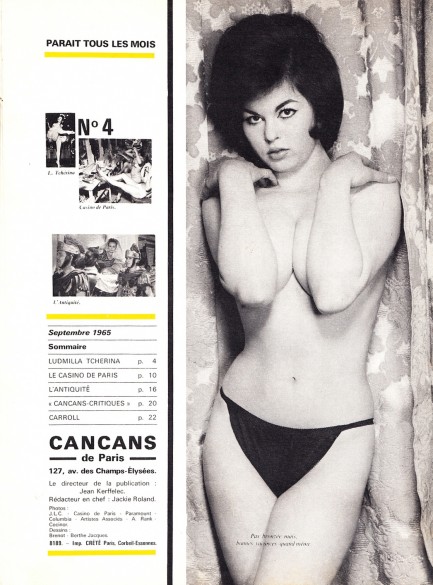
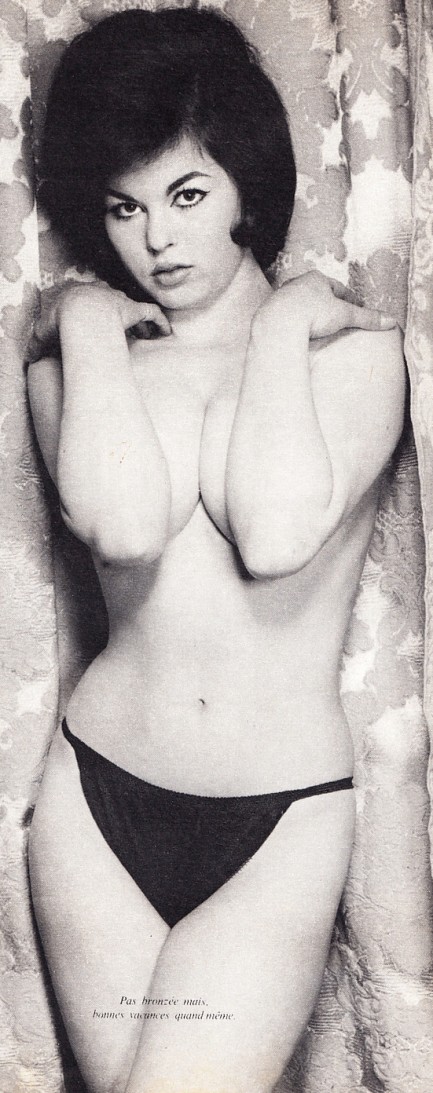
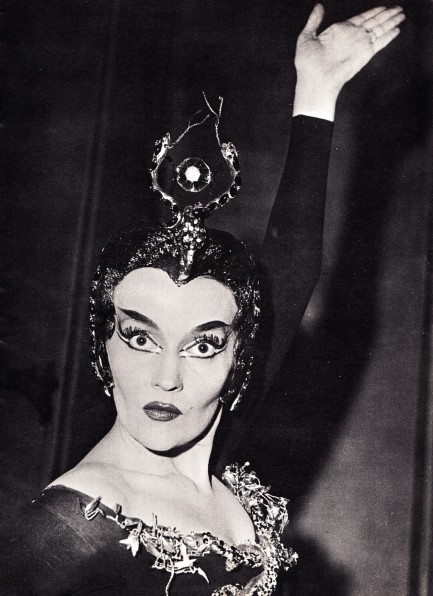
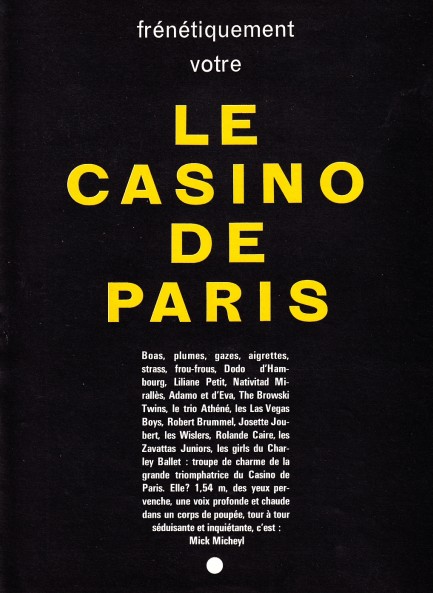
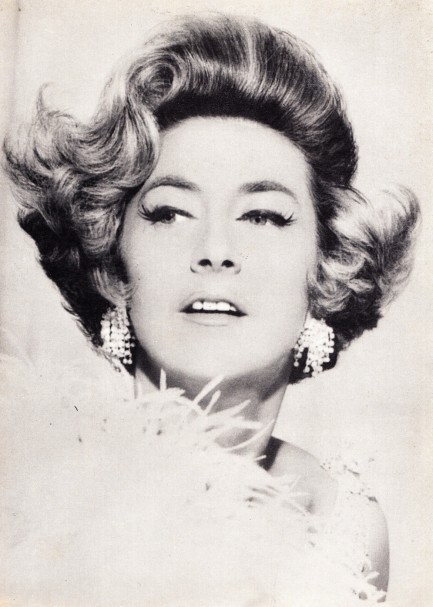
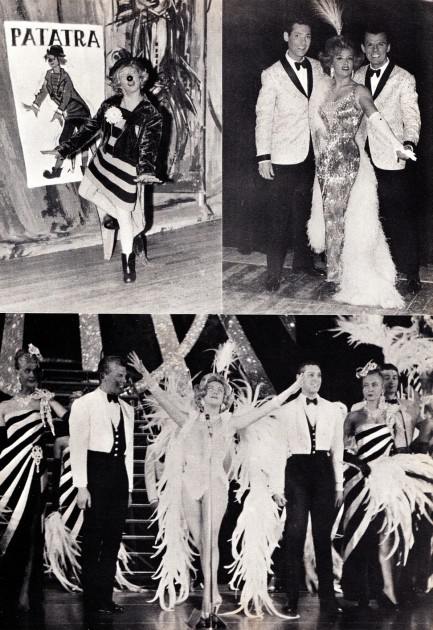
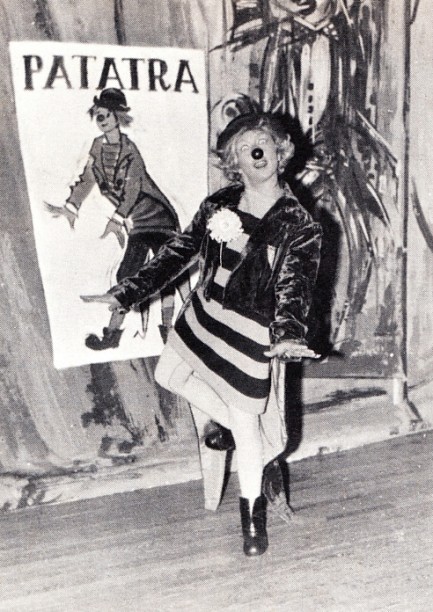
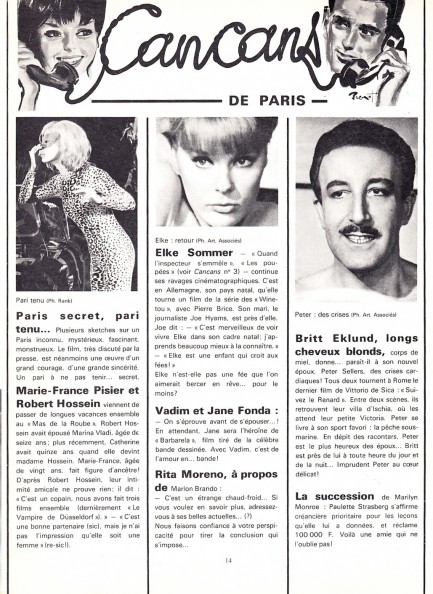
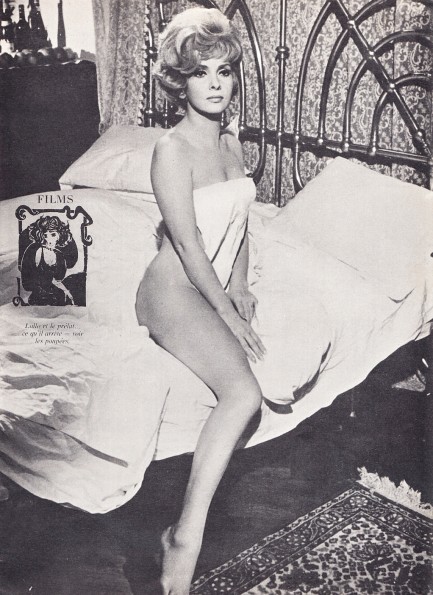
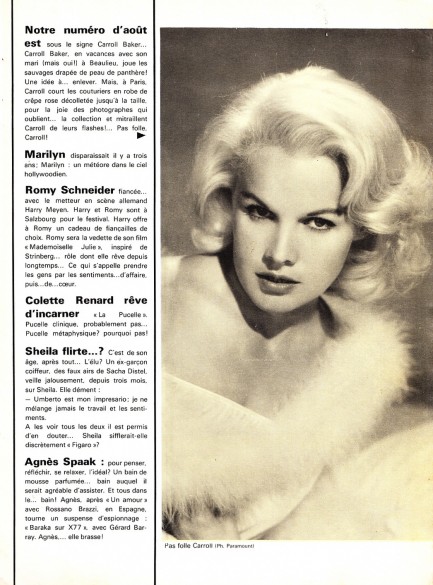
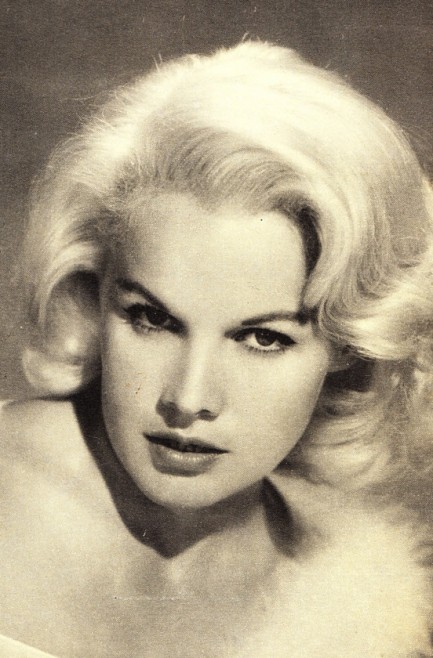


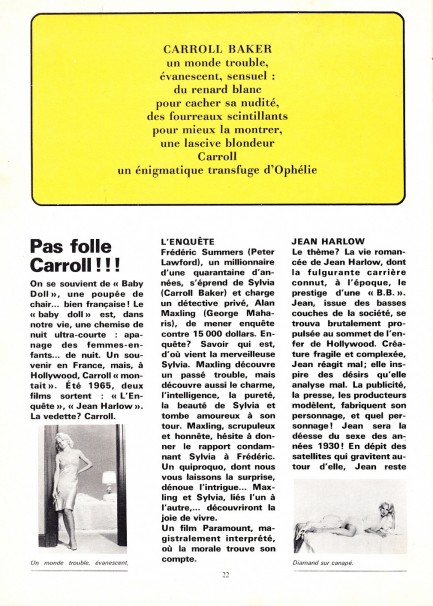
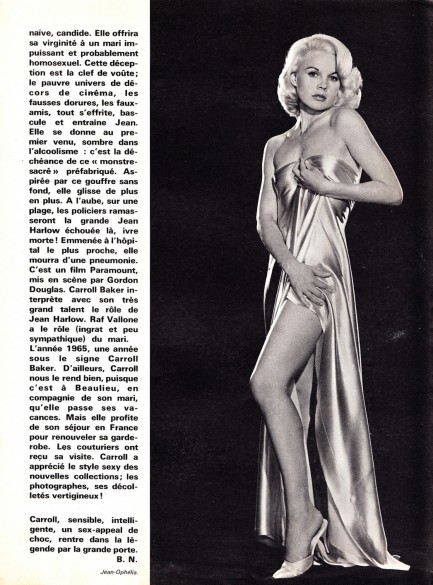
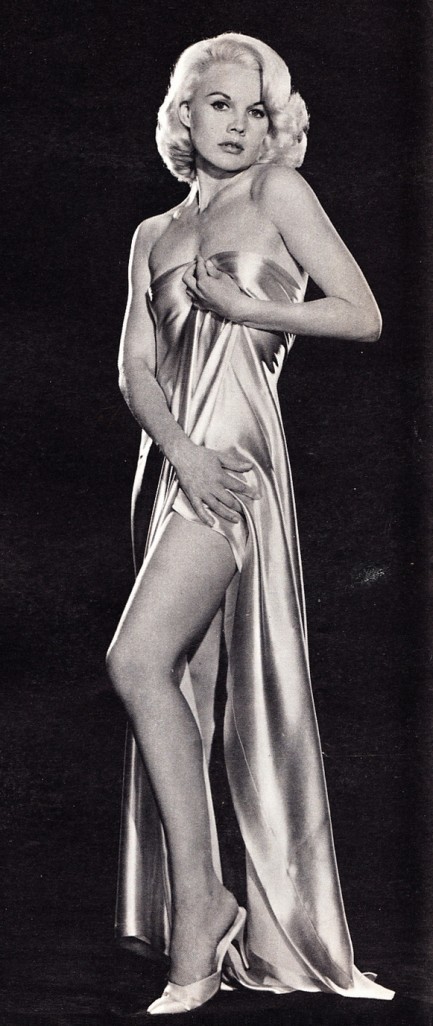
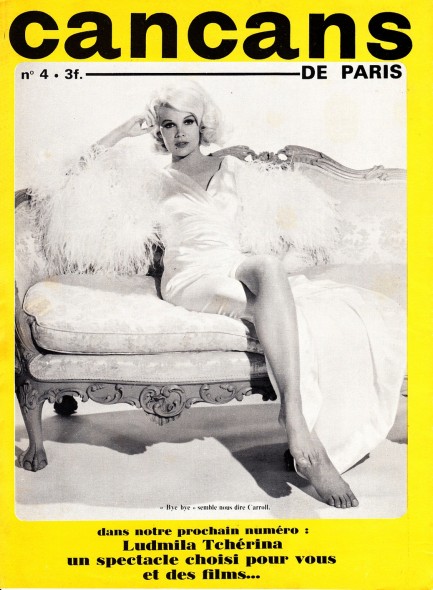
Above: a few pages from the French burlesque publication Cancans de Paris, the seventh time we've taken a look at this mag, with this example dating from September 1965. As always there are mainstream celebrities mixed in with the peelers, including Carroll Baker, Brigitte Bardot, Elke Sommer, Kim Novak, Sean Connery, Sophia Loren, Gina Lollobrigida, and French born ballerina Ludmilla Tchérina. At the top of panel two there's also a minor Raymond Brenot illustration. See some major ones here, and just click the Cancans keywords below if you want to see more issues.
| Vintage Pulp | Mar 25 2020 |

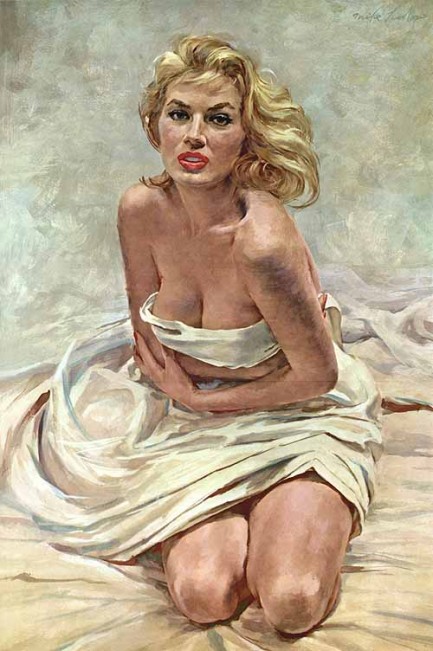
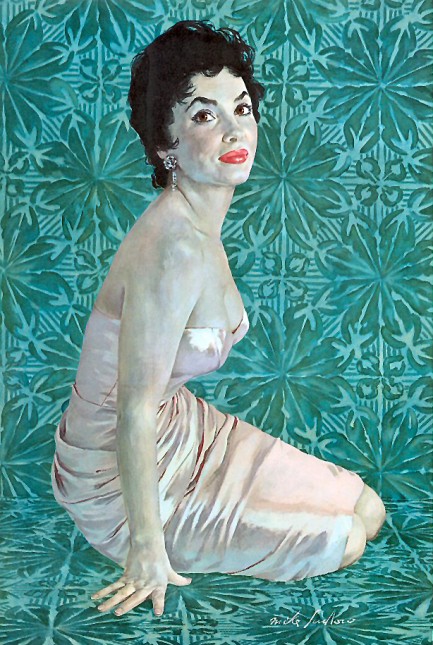
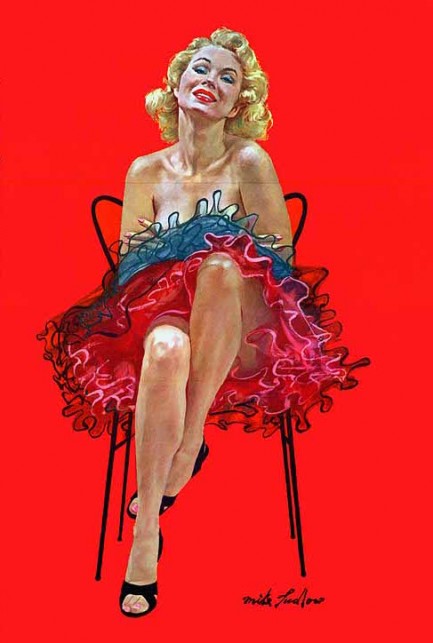
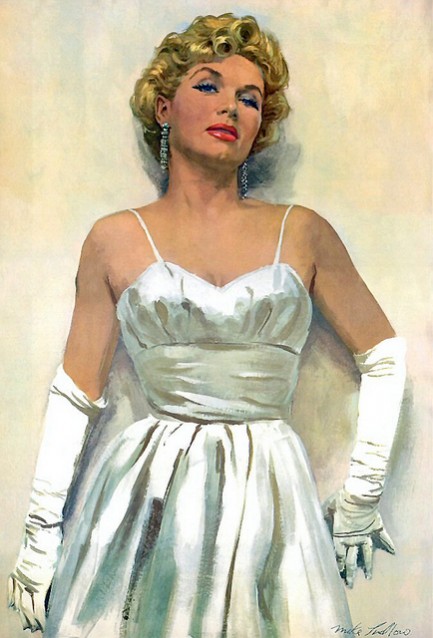
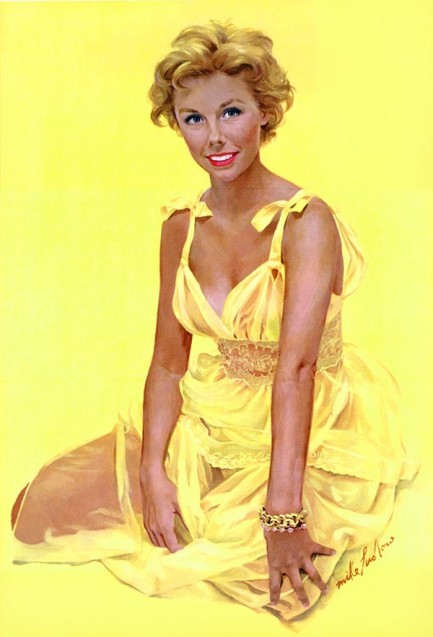
| Vintage Pulp | Nov 24 2019 |


Above, a beautiful poster for John Huston's love-it-or-hate-it comedic African film Beat the Devil, which premiered in the U.S. today in 1954 and starred Humphrey Bogart, Gina Lollobrigida, Jennifer Jones, and Peter Lorre. This poster, while cool, is completely misleading. Beat the Devil is not an adventure. When it was made there was no category for it, but today such movies are called "camp." Only over time have audiences come to understand it. We wrote about it awhile ago and shared a Belgian poster, here.
| Hollywoodland | Apr 11 2016 |


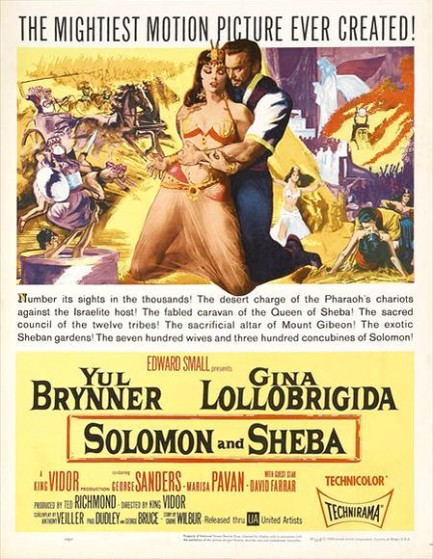 The UPI photo above was shot today in 1959 and shows Italian actress Gina Lollobrigida hula hooping between takes on the set of United Artists' biblical epic Solomon and Sheba. La Lollo was apparently a big fan of the hula hoop—according to the info on the back of the photo she owned this one and brought it from her home in Rome. Interestingly, she was costumed almost exactly like this—in a glittery bra and skirt while showing a bare midriff—in 1950's Vita di cani, 1952's Les belles de nuit, and wore a circus performer's outfit of very similar style in 1956's Trapeze. Her most famous physical trait was her hair (lollo rosso lettuce is so named because it resembles the curly 'do she wore for much of her career), but it seems producers preferred her navel. Can't say we blame them.
The UPI photo above was shot today in 1959 and shows Italian actress Gina Lollobrigida hula hooping between takes on the set of United Artists' biblical epic Solomon and Sheba. La Lollo was apparently a big fan of the hula hoop—according to the info on the back of the photo she owned this one and brought it from her home in Rome. Interestingly, she was costumed almost exactly like this—in a glittery bra and skirt while showing a bare midriff—in 1950's Vita di cani, 1952's Les belles de nuit, and wore a circus performer's outfit of very similar style in 1956's Trapeze. Her most famous physical trait was her hair (lollo rosso lettuce is so named because it resembles the curly 'do she wore for much of her career), but it seems producers preferred her navel. Can't say we blame them.
| Hollywoodland | Oct 30 2015 |

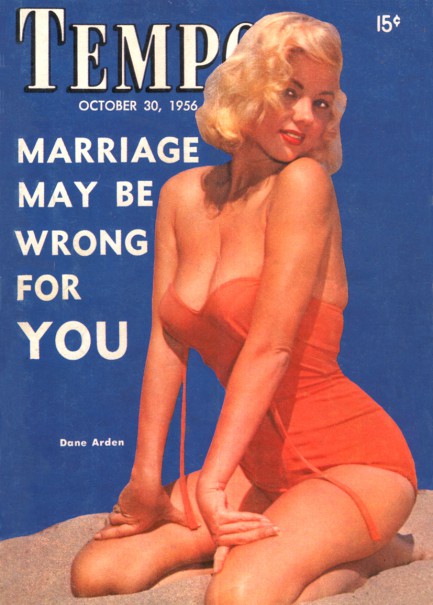
Tempo was a pocket-sized celeb and pop culture magazine published bi-weekly out of Atlanta and New York City by Sports Report, Inc. We don’t know how long it lasted—this one is vol. 7, issue 9—but we know we’ve never seen one dated before 1953 or after 1958. When Dane Arden appeared on the cover of this one from today in 1956, she was already famous thanks to her appearance as Playboy’s centerfold just the previous month. But she had posed under her real name Elsa Sørensen, and back then that may have kept most Playboy readers from realizing Sørensen and Arden were the same person. It's curious. We have no idea if that was her intention, or why she’d have wanted to do it.
If we had to guess, we'd say that Playboy wanted an exclusive association with her Sørensen identity, and pressed her to choose a new name for future modeling. Or perhaps she thought of magazines like Tempo as lower class, and didn’t want to diminish her Playboy image. Or maybe she thought Elsa Sørensen was a little too Danish sounding for Hollywood. But there’s no evidence she ever had an interest in movies, and if she did wouldn’t she have been sacrificing much of the useful recognition she’d gained as a Playboy centerfold? All we can say is it’s one of history’s little mysteries. Hmm… that has a nice ring. Think we’ll claim that one—History’s Little Mysteries™. More Dane/Elsa below, plus Brigitte Bardot, Shirley Falls, Erroll Garner, Sabrina, the Cleveland Browns, Anita Ekberg, et al.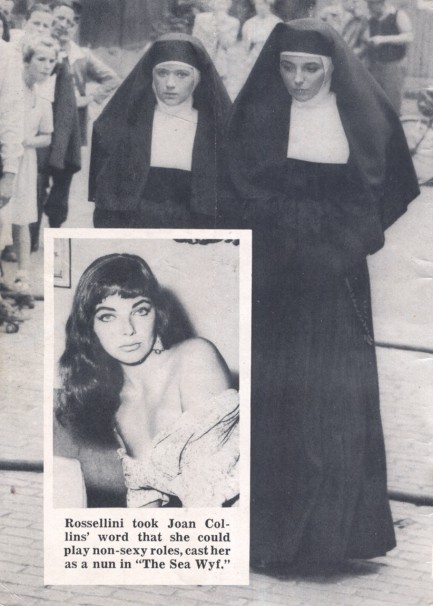

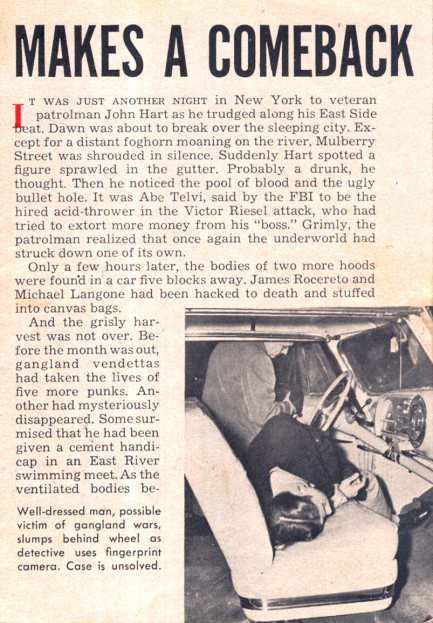
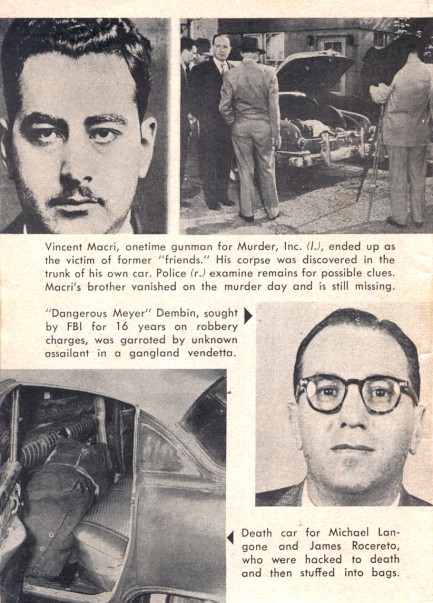
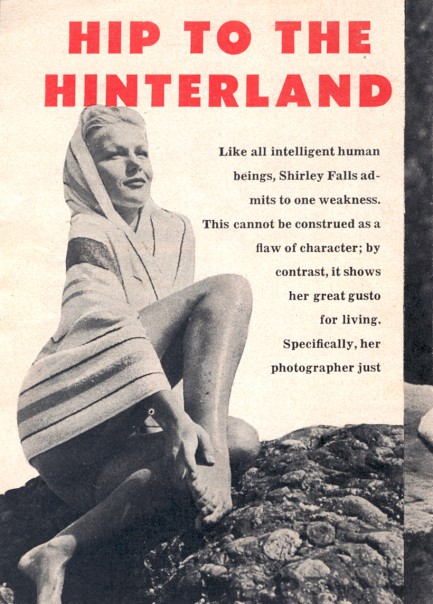
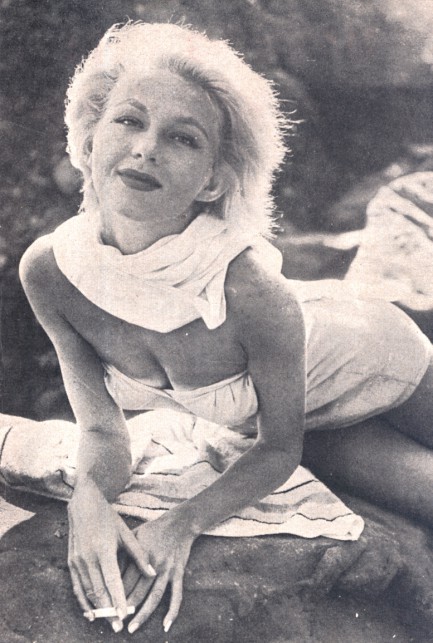



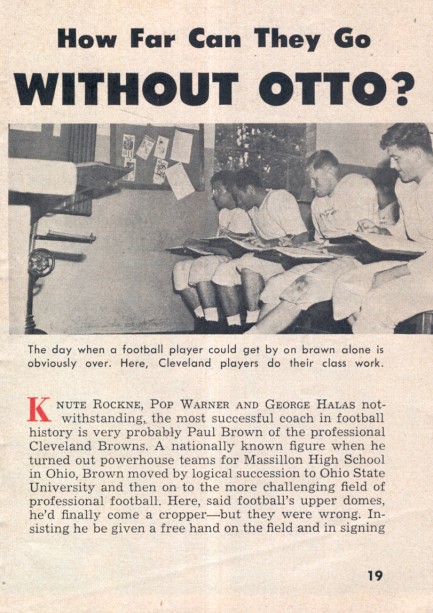
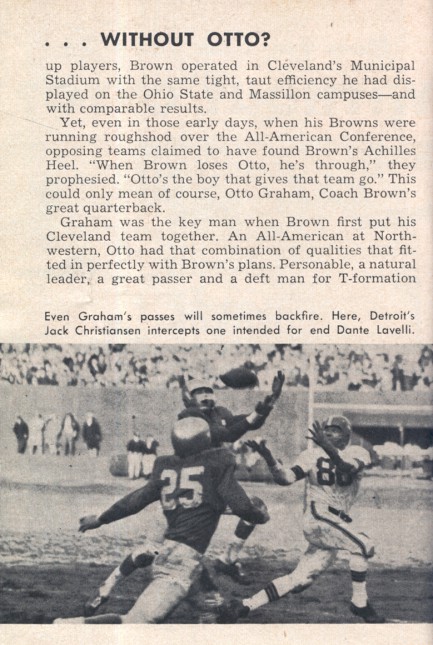
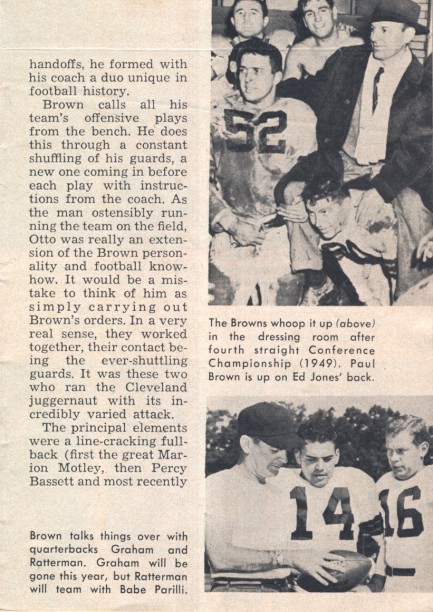

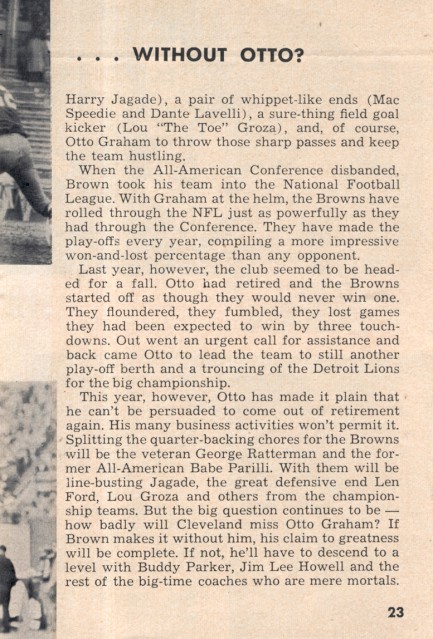
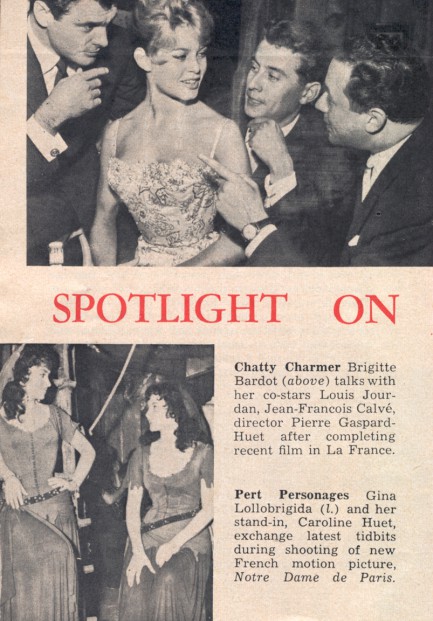
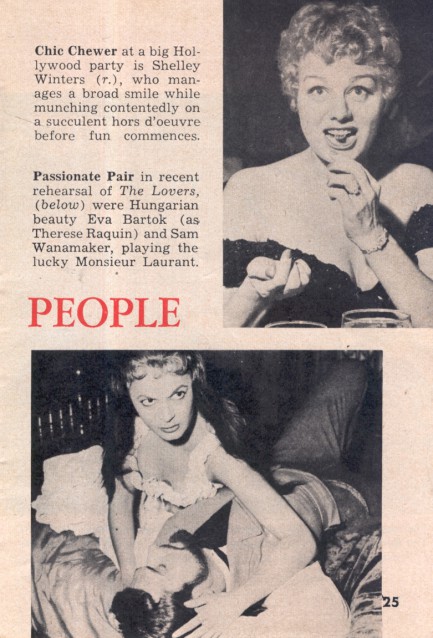
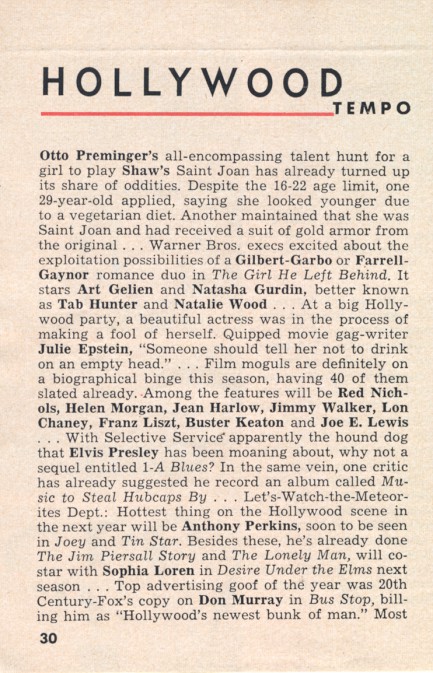
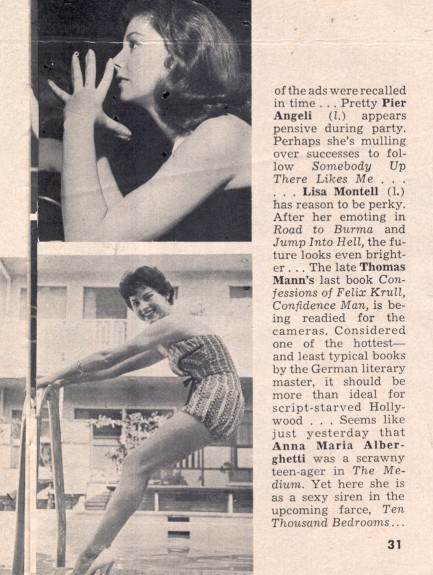
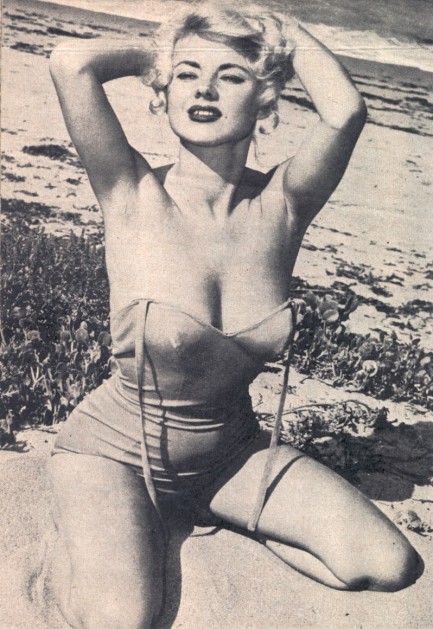
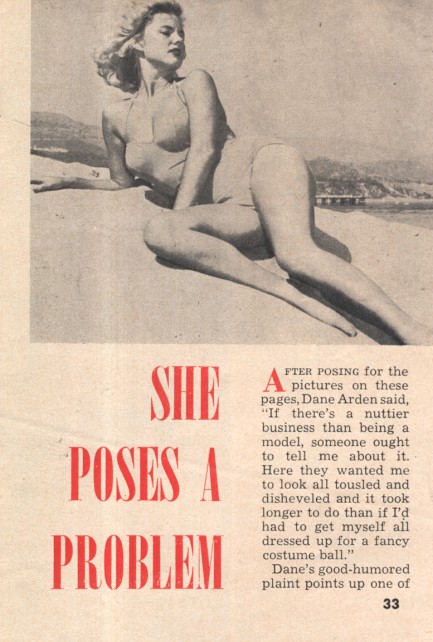
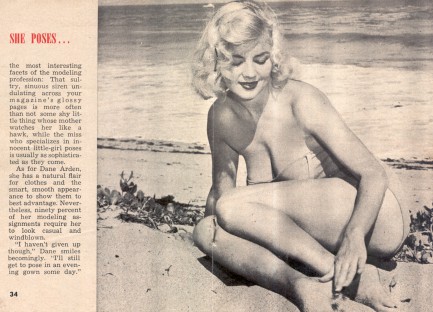
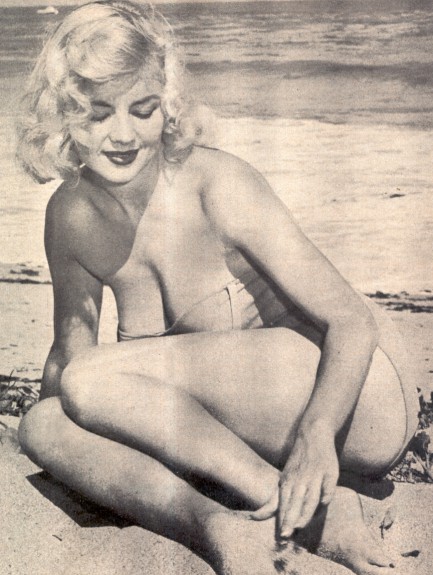
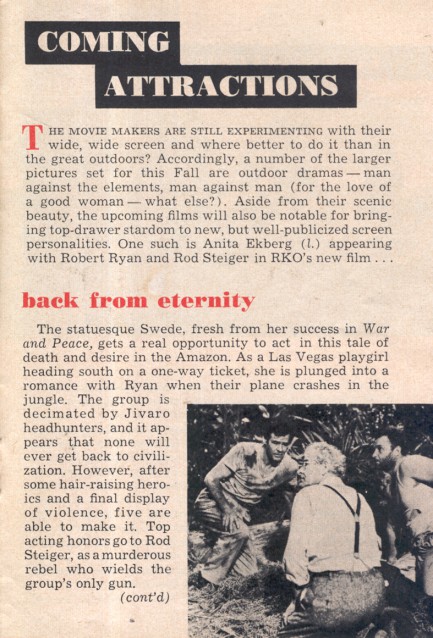
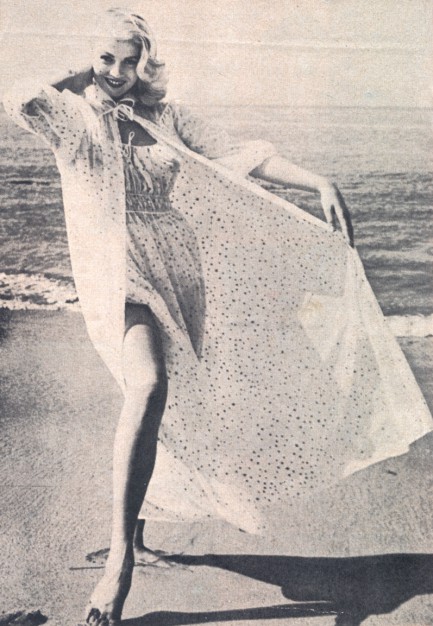
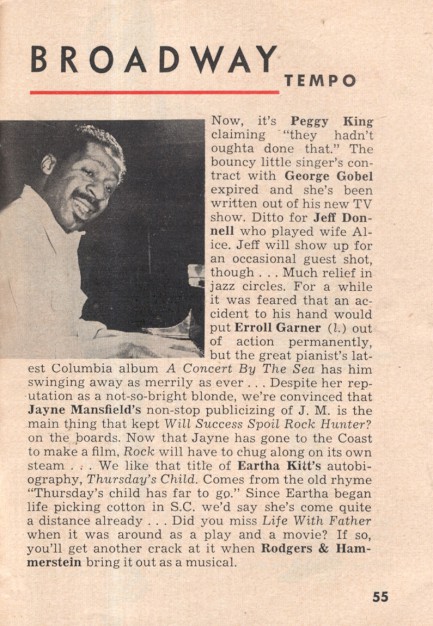
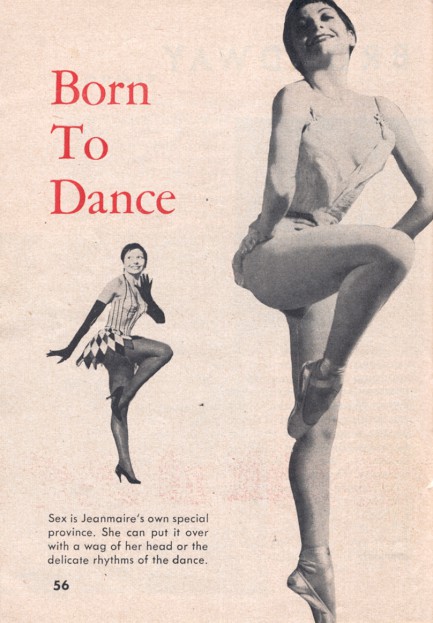

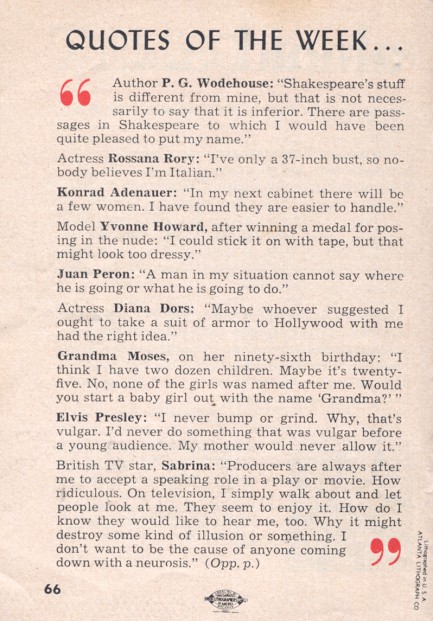

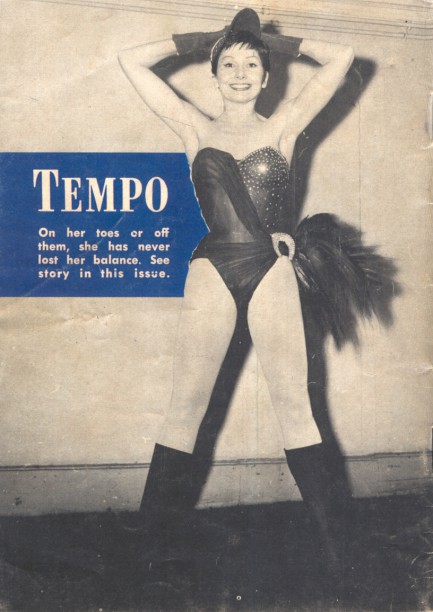
| Intl. Notebook | Oct 10 2015 |


We were going to post nothing today, but even a fine red wine, twenty pages of good fiction, and the attentions of the wonderful Pulp Intl. girlfriends occupy only so many Saturday hours, so above and below you see the cover and contents of the French burlesque and entertainment magazine Cancans de Paris, named after the high-kicking stage dance of 19th-century Montparnasse music halls. This issue appeared this month in 1965 and features Gina Lollobrigida, Verna Lisi, Sandra Dee, ballerina Ludmilla Tchérina, and others.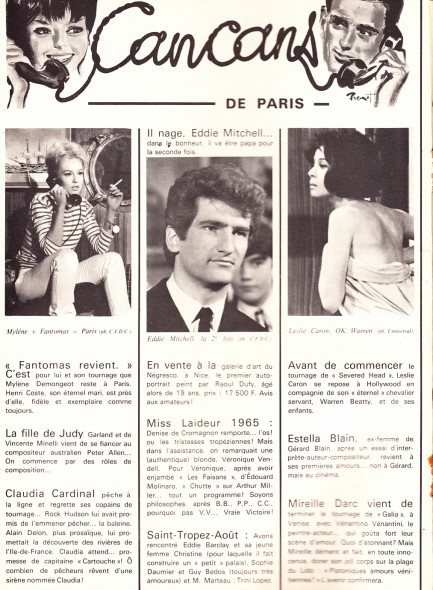
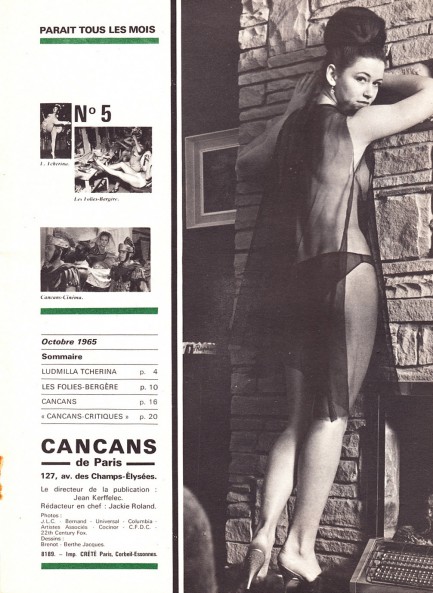
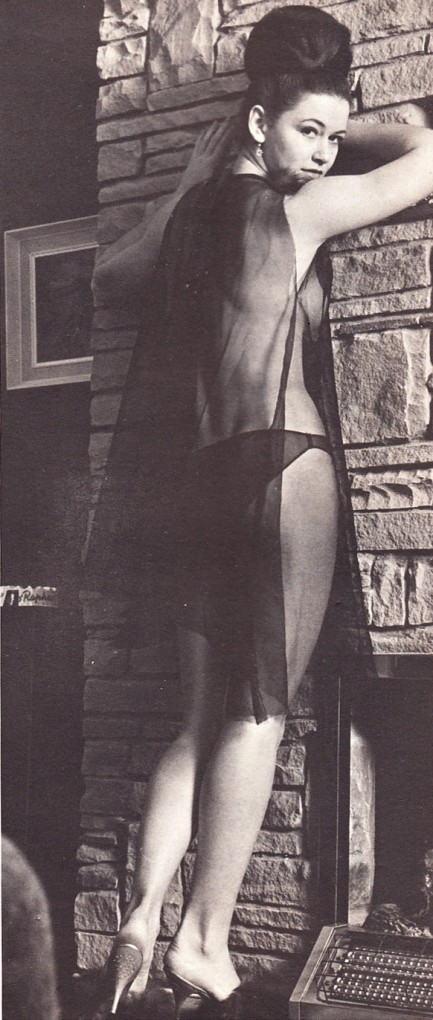
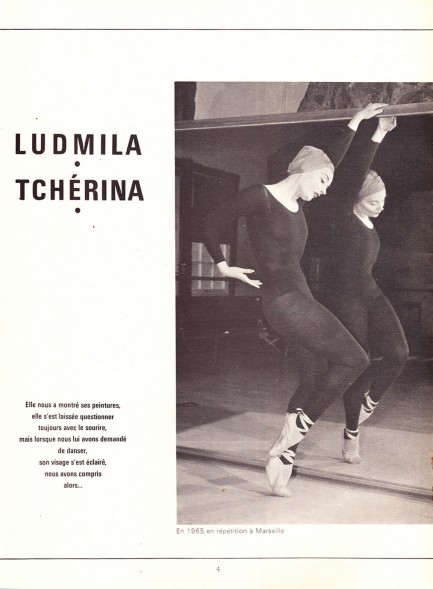
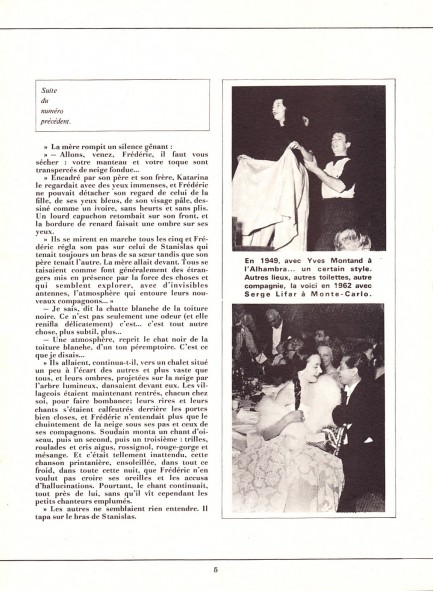
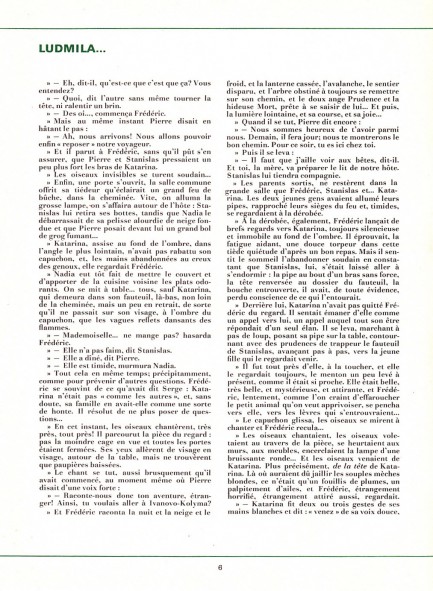
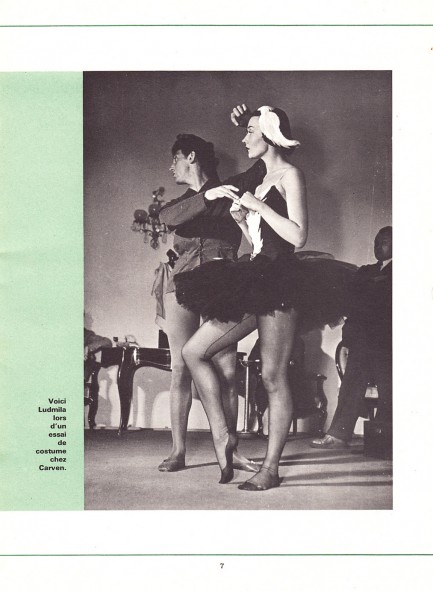
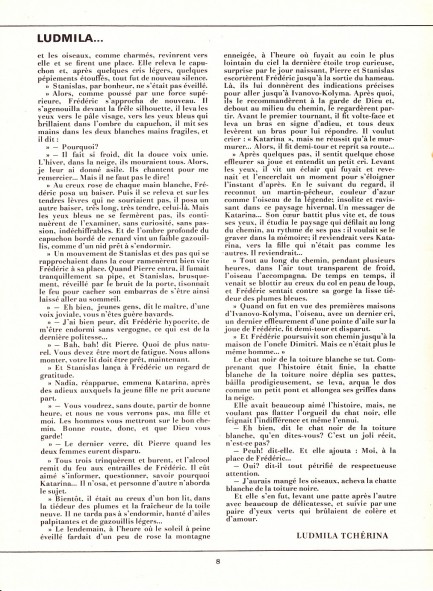
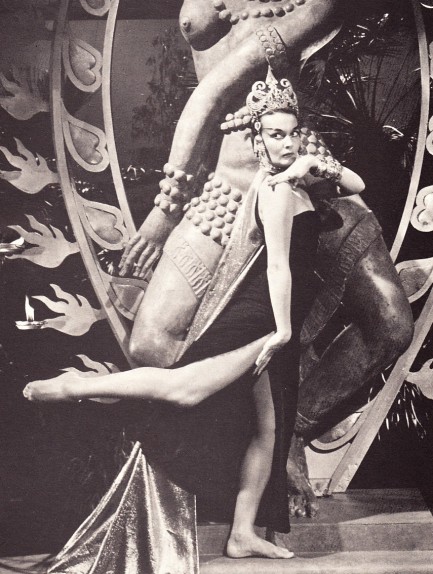
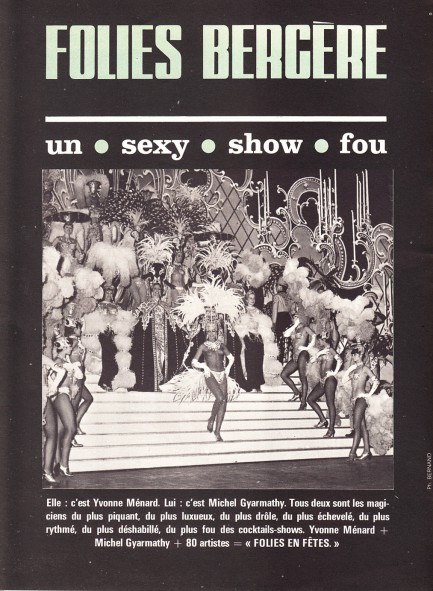
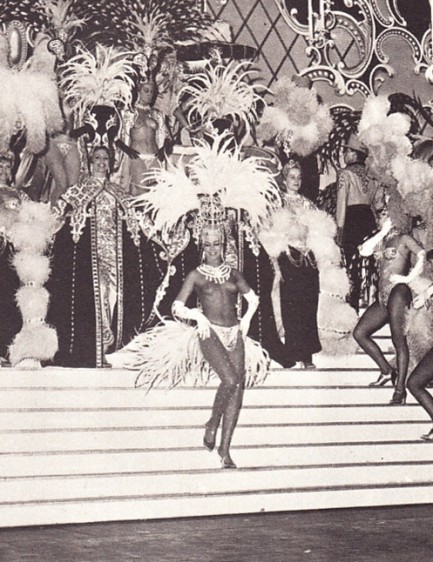
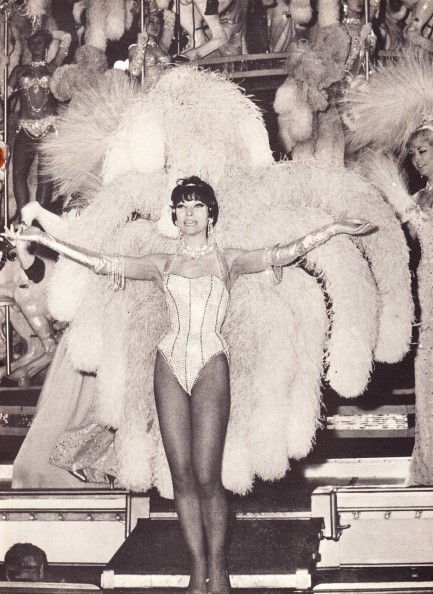
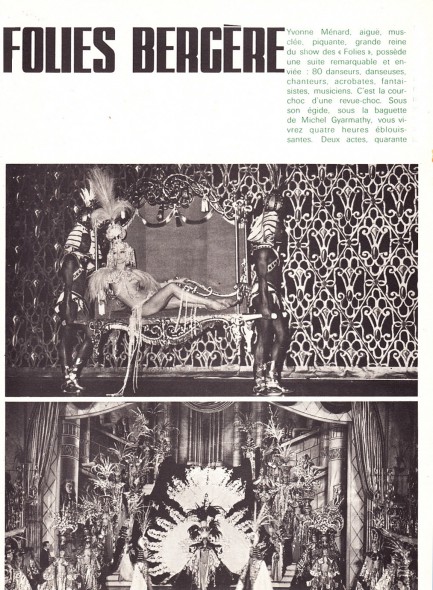
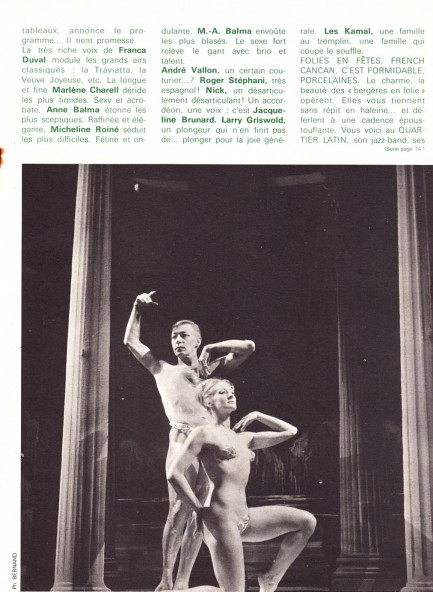
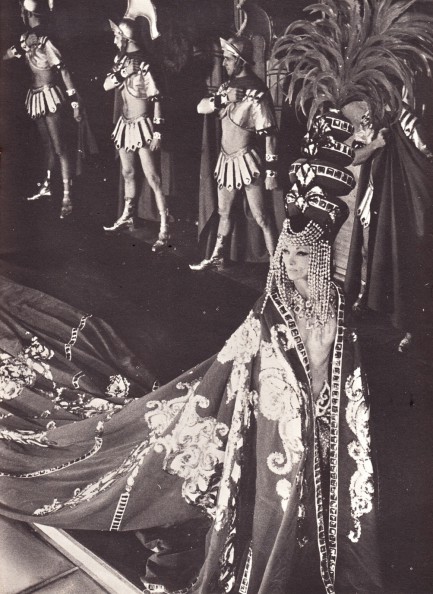
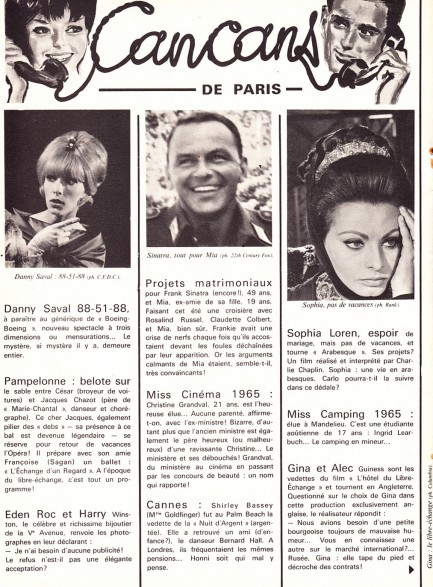
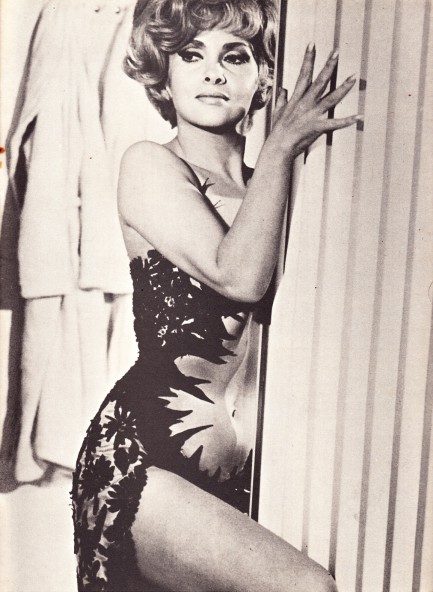
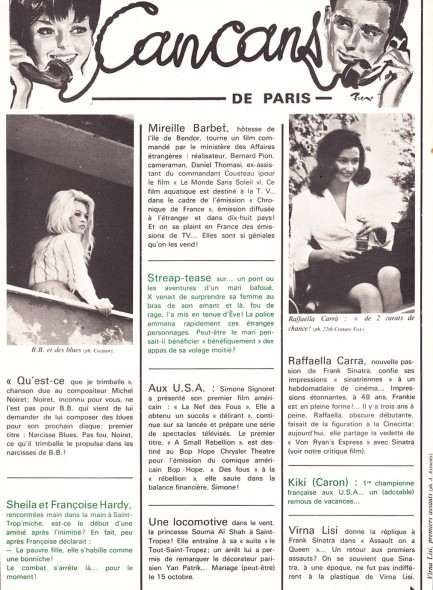
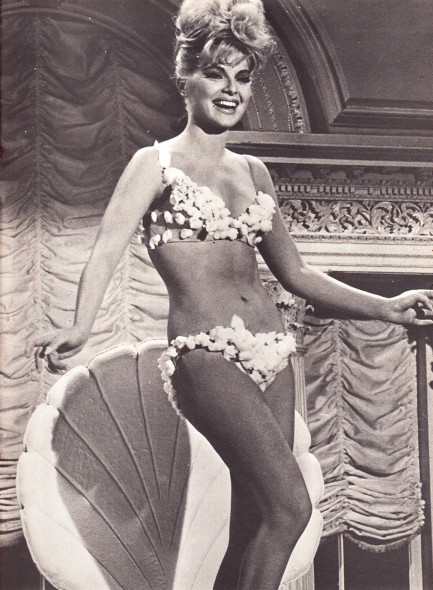
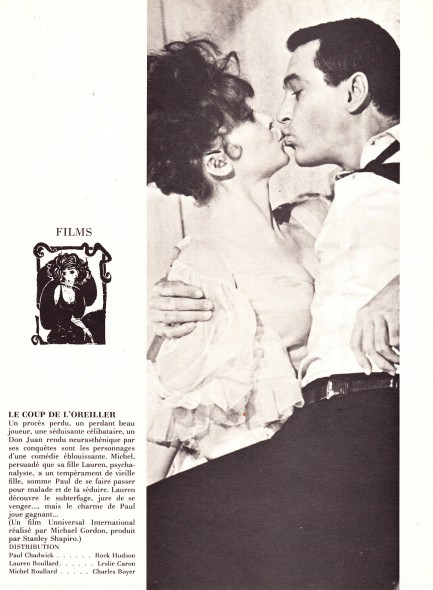
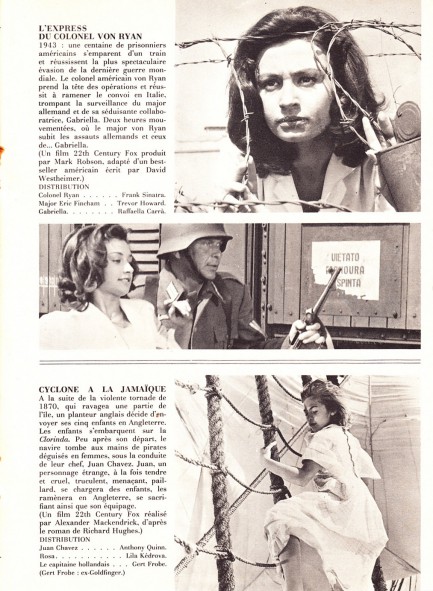
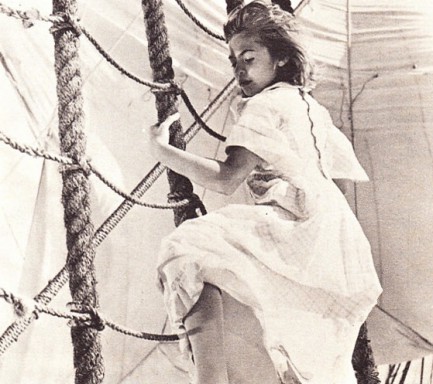
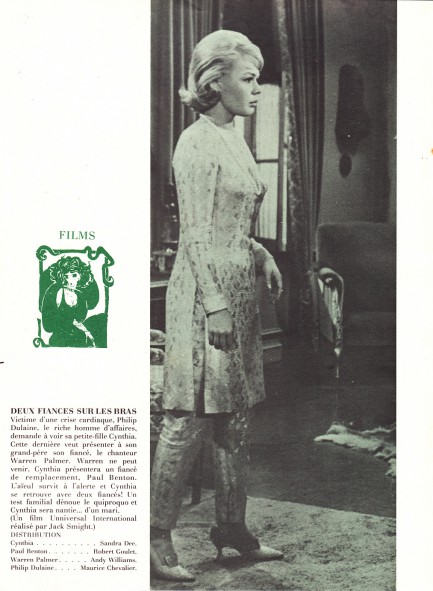

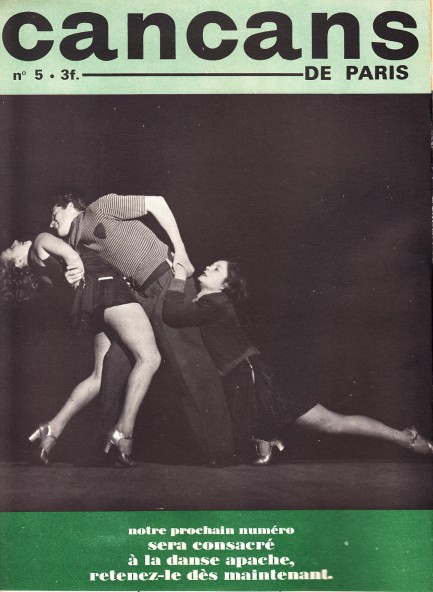
| Femmes Fatales | Oct 31 2014 |


| Vintage Pulp | Oct 28 2014 |


Above, La Vie Parisienne #202 of October 1967—more than one hundred years into its existence by this point—with an uncredited cover star, and interior photos of Gina Lollobrigida, Dany Carrel, Terry Martine, Jane Fonda, Slovenian actress Sceila Rozin, aka Spela Rozin, and other celebs. There’s also a shot of Talitha Pol from Barbarella, and some of you may remember she married the fast living John Paul Getty, Jr. (he of the kidnapped son, though not Pol’s) and later died of a heroin overdose. You also get some truly excellent ink illustrations by the diverse James Hodges, not to be mistaken for contemporary artist Jim Hodges. James Hodges was a French pin-up artist of the 1960s who also became a magician and illustrated magic books, painted playing cards, and designed stage sets. See more from La Vie Parisienne here.
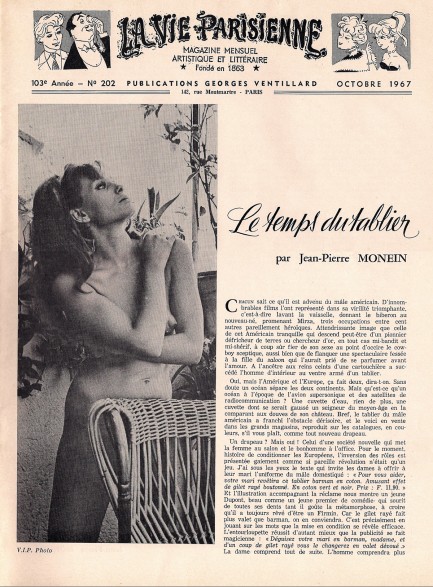


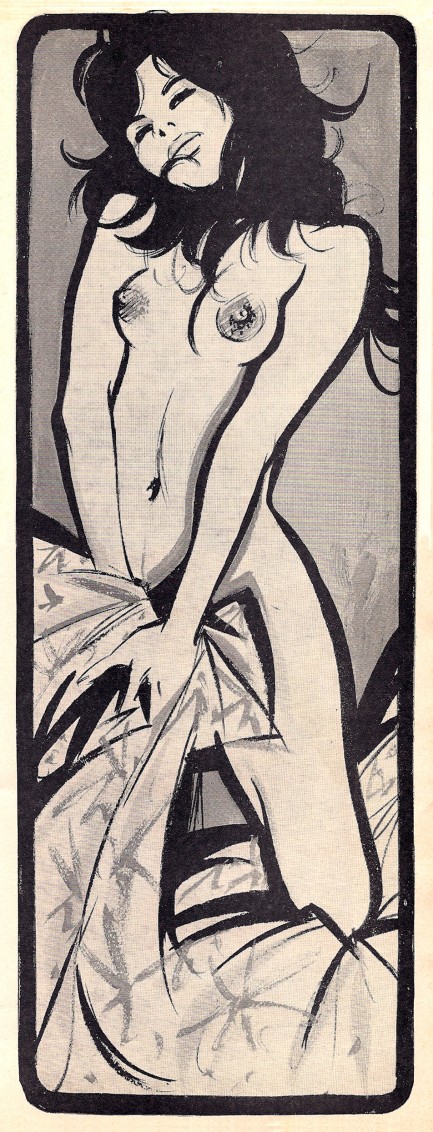



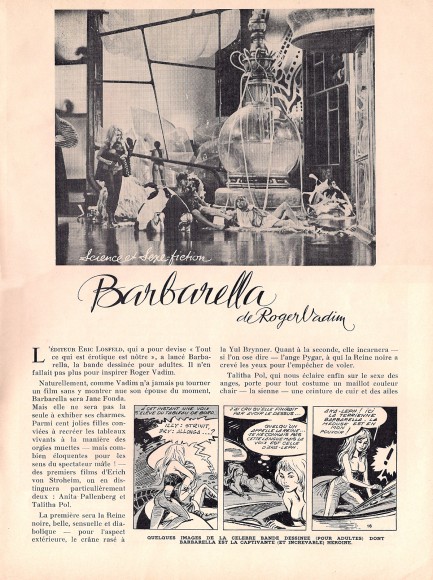
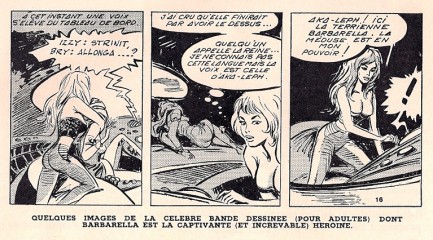
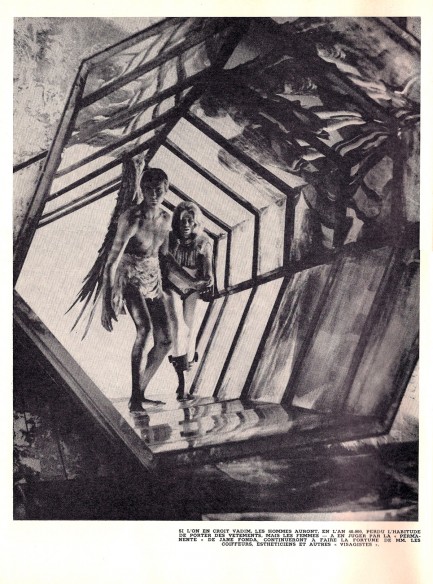


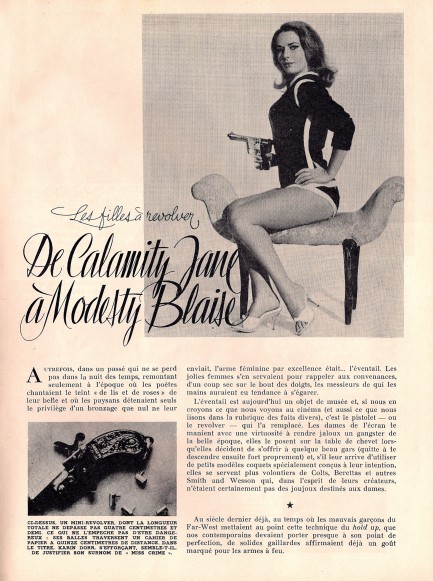

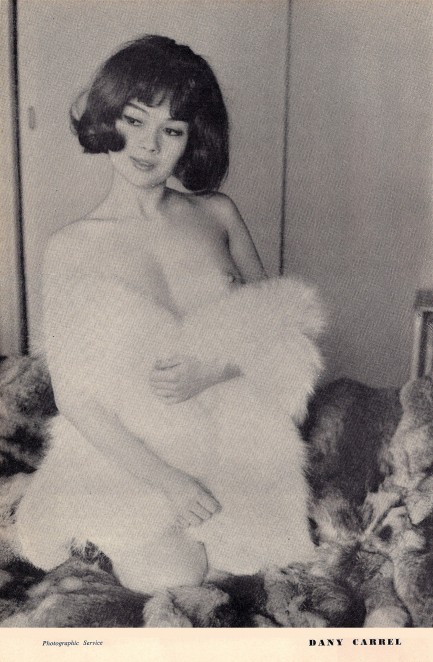
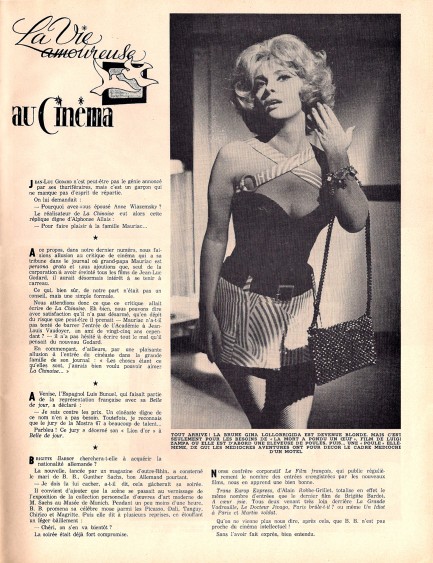

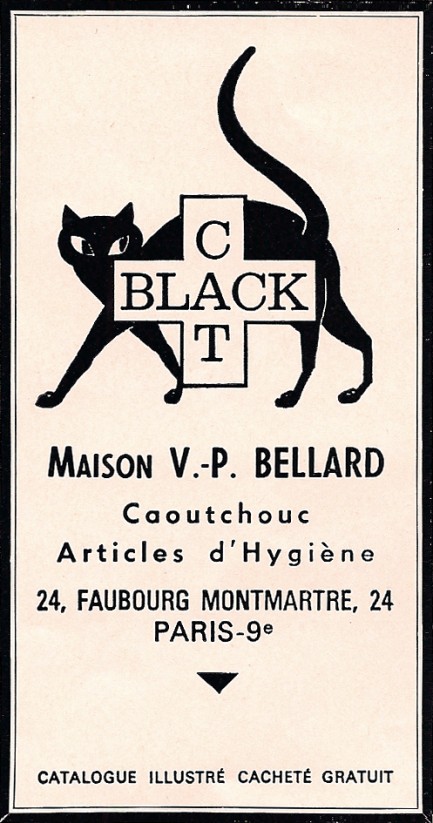
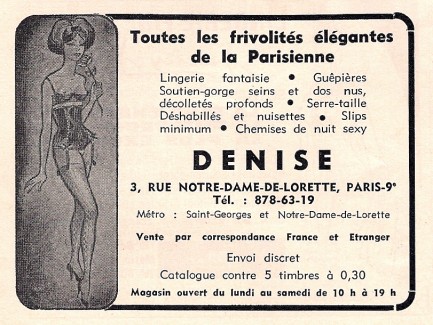
| Vintage Pulp | Aug 15 2014 |

